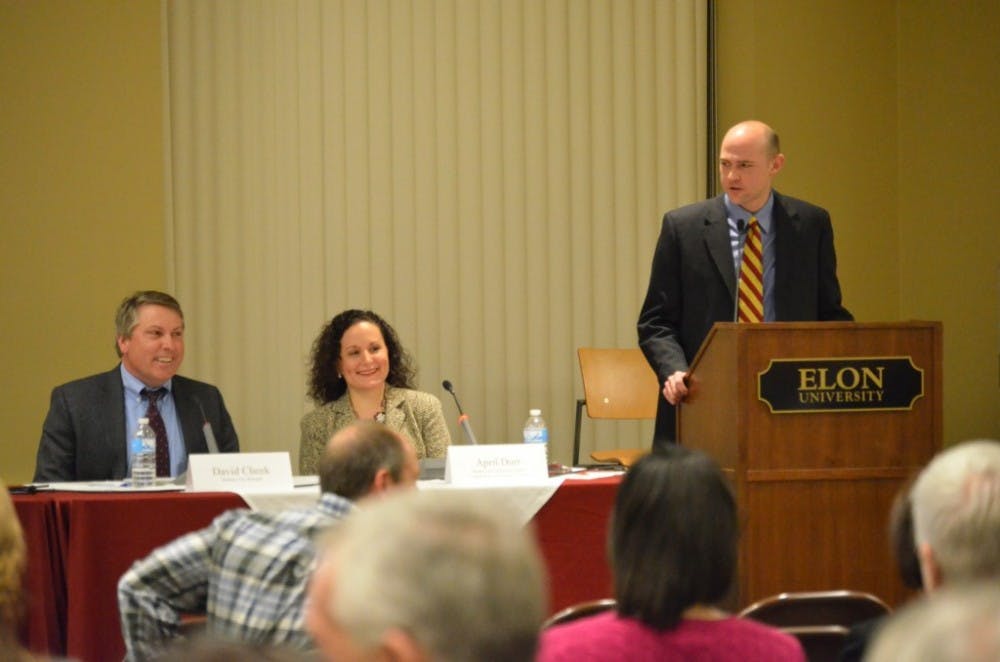When the Council on Civic Engagement at Elon University and the Burlington Times-News co-sponsored the program “Alamance 2030: What will our Community Be Like in 15 Years” Wednesday evening in McKinnon Hall, a consensus was made: The future of Alamance County is dependent upon creating pleasant communities for young professionals and families, while also improving the infrastructure of the region.
A panel of four guests, moderated by Jason Husser, assistant professor of political science and policy studies, shared insights into the demographic and economic changes occurring in Alamance County and the implications for the future.
Panelist David Cheek, Mebane City Manager, cited the changes that have occurred in Durham since 2000 as inspiration for Alamance County.
“I’ve spent a little time in downtown Durham. A lot of you may not remember downtown Durham, but it’s changed dramatically,” Cheek said.
He attributed economic changes and population shifts in Durham to the growth in apartments. Cheek said that Alamance County could have similar results.
“I think [the solution is] you create communities where people want to live,” he said.
Amy Nelson, director of Burlington Planning and Economic Development, agreed with Cheek’s assessment.
Based on the research she has conducted recently on economic development, creating enjoyable communities could stimulate economic growth in Alamance County. After these communities are established, she believes more jobs will follow.
By improving living conditions, the panelists believe that more college graduates, including those from Elon, would be more likely to pursue jobs in Alamance County. This would increase the level of higher paying jobs in the county, and overall, an increase in economic growth.
Eric Henry, resident of Alamance County for over 50 years, said that the solutions were present within Alamance County, citing Elon students as a potential mechanism to improve the community by staying in the region after graduation.
Elon President Leo Lambert spoke from the audience and agreed that harnessing the talent of young individuals would be a fundamental aspect in improving the overall community.
“I’ve never underestimated what a young college graduate can do when they put their minds to it,” Lambert said.
Additionally, panelists agreed that infrastructure in Alamance County could help commuters travel to their jobs faster, while also better connecting Alamance County to other North Carolina regions like the Triangle and the Triad.
“I think [infrastructure is] probably the number one issue holding back this community,” said panelist April Durr, director of community impact at the United Way of Alamance County.
The panel argued that the raw materials for economic development in Alamance County are present, but initiating economic growth is a process that may require more time.
“We’re part of one of the biggest growth regions in America,” said panelist Ryan Kirk, assistant professor of geography and environmental studies. “The hard part is bringing economic development.”
Cheek believes the primary source for addressing these issues is local government. Cheek, who has been a part of local government for 32 years, encouraged audience members to become involved with local government to help initiate changes and identify solutions.
By engaging the community in the local government, quick changes could occur and federal involvement wouldn’t be necessary.
“Local government can really have a positive impact,” Cheek said. “I don’t think we need to apply a federal mentality to our local government. We can do some really great things at the local level.”


